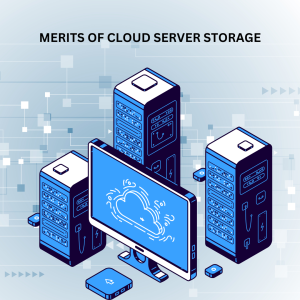Losing critical business data can quickly put a company out of business. According to IBM, 93% of companies that lose their data center for 10+ days file for bankruptcy within one year. Yet many organizations continue to have a false sense of security about their on-premises backups.
On-premises backups onto tapes or disks have been a staple for data protection for decades. However, this method has inherent risks in today’s threat environment. If the backup media is stored in the exact location, fires, floods, hardware failures, viruses, network outages, and ransomware attacks could compromise your primary and backup data servers.
To truly protect your data, air-gapped offsite backups are essential. Cloud on-premise server provides an automated, cost-efficient way to store critical backup data offsite and recover rapidly.
The Real Danger of On-Premises Backup
Many businesses today realize the importance of backup. But with backup media stored onsite, companies are still at significant risk of losing data permanently. If a localized event causes complete destruction or corruption of files, locally stored backup brings no advantage.
Some common scenarios where on-premises backups fail:
- Fire, flood or natural disaster at the office destroys servers and backup media
- A virus or ransomware encrypts both primary data and local backups
- Hardware failure corrupts data across multiple disks and tapes
- Theft of servers and backup tapes from the office
- Accidental erasure or corruption of backup media
- Unauthorized data deletion or tampering by a disgruntled employee
These catastrophic data loss events are more common than most people realize. Businesses saw a 10% increase in data loss incidents, according to Datto’s Global State of the Channel Ransomware Report. Local backup alone is not enough for comprehensive data protection.
The Benefits of Air-Gapped Cloud Backup
Air-gapped backups refer to copies of data stored securely offsite in an alternative location. This prevents geographic risks like natural disasters or site failures.
Cloud backup takes air-gapping one step further by storing data in a hosted cloud environment. Leading backup providers have secure global data centers engineered for data protection. Cloud backup adds these key benefits:
1. Automated offsite backup
Data is sent encrypted over the internet to cloud data centers regularly
2. Accessibility from anywhere
Users can restore from backup using internet access
3. Geographic redundancy
Data is replicated across multiple data centers
4. Advanced security
Cloud data centers have state-of-the-art physical and digital security
5. Increased reliability
Cloud platforms offer higher availability versus on-prem solutions
6. Faster disaster recovery
Quickly spin up virtual machines from backup images
7. Flexible scalability
Cloud storage scales easily as data needs grow
Cloud backup provides the best of both worlds: automated offsite data air-gapping combined with web-based accessibility.
Overcoming Common Concerns About Cloud Backup
With the advantages of data protection, many companies are migrating backups to the cloud. However, some IT professionals resist cloud backup due to common misconceptions:
- Offsite data transfer bottlenecks Incremental block-level backup minimizes this issue by only sending changes/deltas each time. Most servers see 90%+ data reduction.
- Significant WAN bandwidth required Bandwidth needs are often overestimated. On average 5Mbps is sufficient for hundreds of GB of data.
- Latency impacts on production Backup schedules can be set for off-peak hours to prevent performance impact.
- Restores take too long from the cloud. Local on-premises cache appliances provided by backup vendors mitigate this.
- High costs compared to tapes With compression and dedupe, cloud backup is often more affordable than physical media and offsite vaulting.
- Lack of physical control Reputable cloud providers offers better data protection capabilities than most organizations can achieve internally.
- Regulatory compliance factors Many backup providers meet standards like HIPAA, SOC2, ISO 27001 that satisfy regulators.
With proper product selection and setup, these concerns are easily overcome to gain major data protection benefits from cloud-based backup.
The True Cost of Lost Data
It’s important to think beyond just product costs when considering backup solutions. The true costs of significant data loss can be devastatingly high in comparison:
- Lost revenue outage while restoring operation from backups
- Workflow interruptions employees unable to perform duties
- Breach notification costs regulatory fines, credit monitoring services
- Reputation damages customers who lose trust after a major data breach
- Lost opportunities deals missed because staff are recovering from data loss
- Legal liabilities lawsuits/damages from data leak incidents
- Employee productivity impact overtime to restore business function
- Financial data losses transaction records, reporting, accounting issues
According to ESG, the average cost of data loss for an SMB is $200,000. For larger mid-market and enterprise companies, that figure can easily reach millions.
When calculating the combined hard and soft costs of extended downtime and data loss, paying five or six figures annually for robust data protection is highly worthwhile. The ROI for cloud backup is clear, given the potentially catastrophic alternative.
Implementing a Comprehensive Cloud Data Protection Strategy
To fully protect your digital assets, a modern cloud-centric data protection strategy is essential:
- Replace outdated tape backups with faster, more reliable cloud backup
- Maintain local on-premises backup for faster restores of recent data
- Mirror mission-critical data to a secondary cloud region for DR
- Ensure cloud backup security with encryption key management
- Cover all core data repositories, SaaS apps, datastores, NAS, and more
- Test backups regularly via test restores to validate recoverability
- Document detailed disaster recovery procedures for different scenarios
- Train staff on proper data protection procedures
- Evaluate backup reporting to spot issues and optimize configurations
- Select cloud backup providers carefully based on security, scalability, and features
The correct data protection platform should back up both on-premises and cloud-based environments. This includes virtual machines, databases, file storage, SaaS applications like Office 365, and mobile devices.
Top cloud backup providers like Kaluari or m@ilsafi offer comprehensive data protection covering multiple sources from one management platform via the web console. This dramatically simplifies administration compared to traditional on-premises solutions.
With a sound strategy following modern IT best practices around offsite backup, you gain much greater confidence in recovering from any potential data disaster quickly. Don’t let the failure to implement adequate business continuity planning be the reason for your company’s demise.





Pingback: Keep Your Data Safe: The Complete Guide to Cloud Backup Best Practices